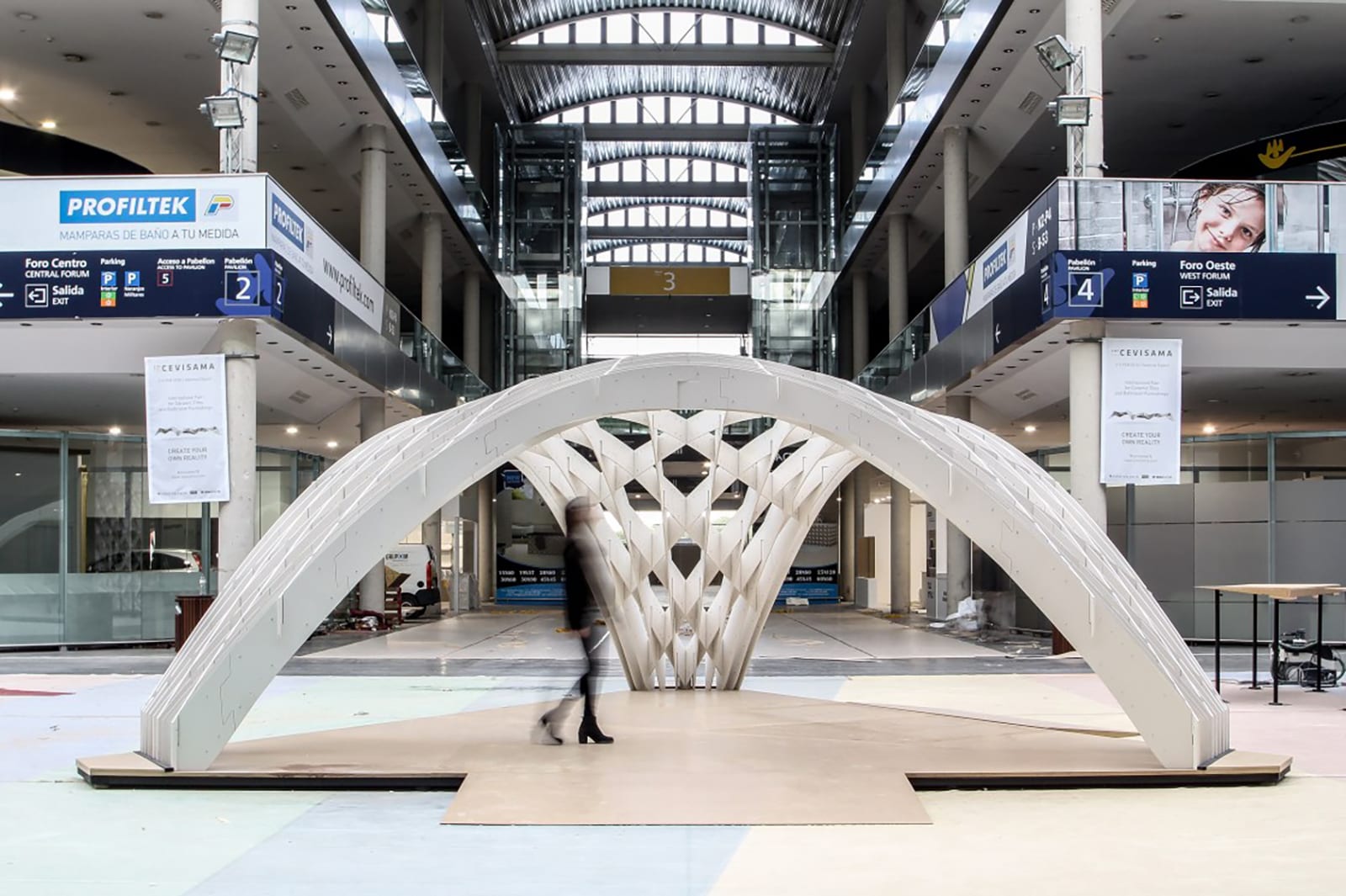Developed by researchers and students from the Material Processes and Systems (MaP+S) Group at the Harvard Graduate School of Design, Ceramic Tectonics: Tile Grid Shell explores the structural capabilities of thin, large format ceramic tiles – a product commonly used as an interior surface finish or exterior cladding. In other words, Ceramic Tectonics asks the question; can a product typically experienced as a two-dimensional surface also define and enclose a three-dimensional space?
Fabricated from unreinforced 6mm thick ceramic tile, the catenary form of this triangular, self-supporting grid shell is designed to minimize internal stresses and efficiently span between three points of support. Thus, it consists of 462 unique elements ranging from 82 – 181cm in length and measuring 107.22 sqm in total area. Likewise, the structure weighs approximately 1,662 kg with a maximum interior height of 2.48m. Also, with a span of 6 m between supports, the structure includes approximately 13.5 sqm of occupiable interior space.
Tile Grid Shell form a novel structural pattern formed by 30 ceramic ribs which are a world-wide first system of this kind constructed from ceramics. Certainly, this project shows how the structural applications are emerging as new applications for tiles, challenging age-old perceptions of ceramic as surface finish.
